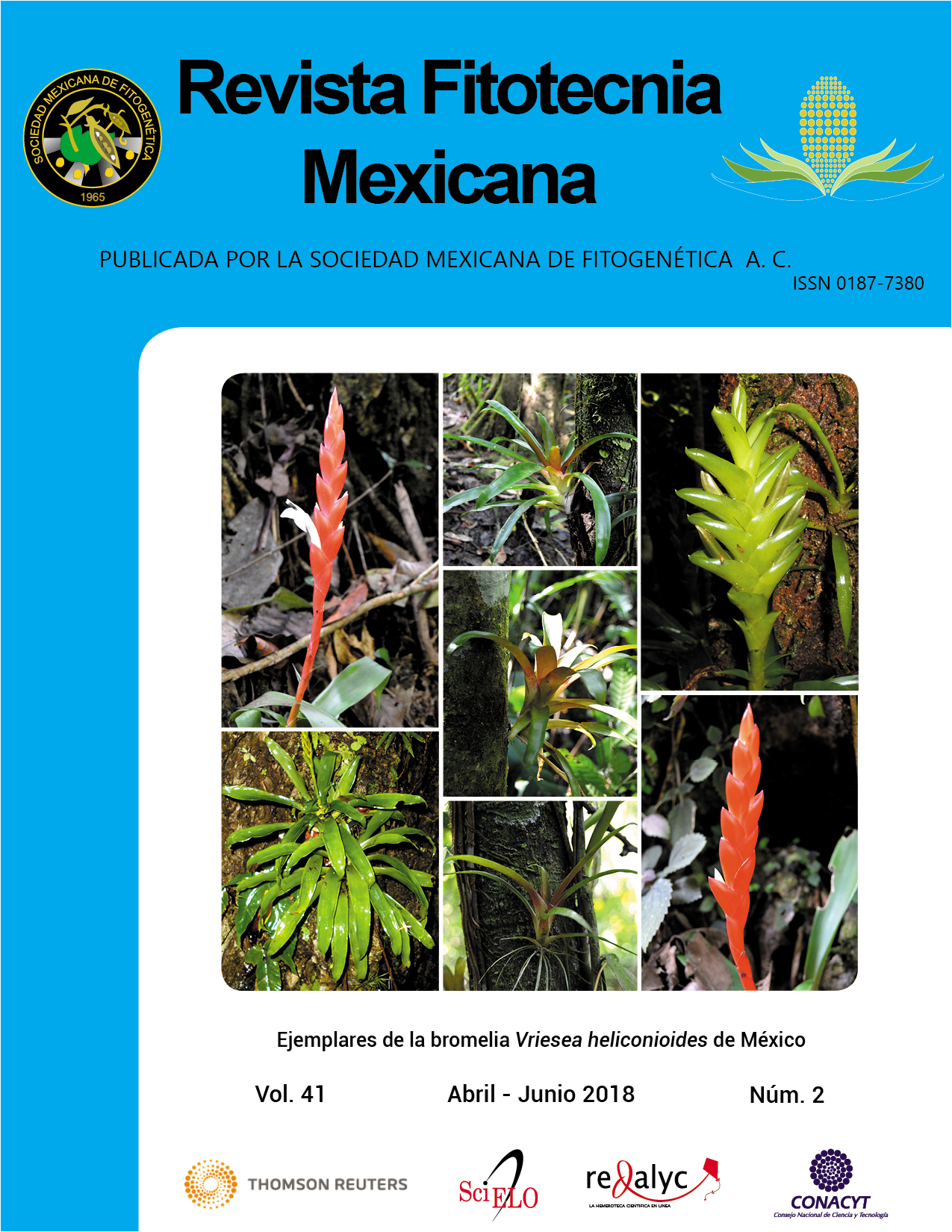PHYLOGENETIC ANALYSIS AND DISTRIBUTION OF BEGOMOVIRUS IN PEPPER (Capsicum annuum L.) CROP IN SINALOA, MEXICO
Main Article Content
Abstract
In the year 2017, chili pepper (Capsicum annuum L.) in Mexico registered a production of 3 million 54 thousand tons. In the last five years there have been economic damages and losses of 20 % in the production of chili pepper due to Geminiviruses. The objective of this study was to determine the distribution and genetic variability of the Begomovirus that infects pepper in the main producing areas of Sinaloa, Mexico. A total of 121 pepper samples with symptoms of Begomovirus were collected in the municipalities of Escuinapa, Rosario, Concordia, Mazatlán, Elota, Culiacán, Guasave y Ahome. In all the 121 samples Begomoviruses were detected by the polymerase chain reaction (PCR) technique; PHYVV was detected in 74.4 % of the samples, PepGMV in 53.7 %, TYLCV in 5.8 % and in 12.4 % the type of Begomovirus was not identified. In addition, mixed infections were detected between the viruses PHYVV, PepGMV, and TYLCV with 5.8 % and in the combination PHYVV and PepGMV with 36.4 %. This is the first report of a mixed infection under field conditions in pepper plants with a monopartite Begomovirus (TYLCV) and two bipartite Begomoviruses (PHYVV and PepGMV) in the municipalities El Rosario, Culiacán and Ahome of the state of Sinaloa, Mexico. The viruses PHYVV, PepGMV and TYLCV presented nucleotidic identity of 94 to 99 % with that reported in GenBank. TYLCV was detected in different pepper genotypes of pepper; Serrano, Jalapeño, Bell and Ancho in the municipalities of Rosario, Culiacán and Ahome, indicating a wide distribution and host range of this Begomovirus in the different genotypes of pepper grown in Sinaloa.

